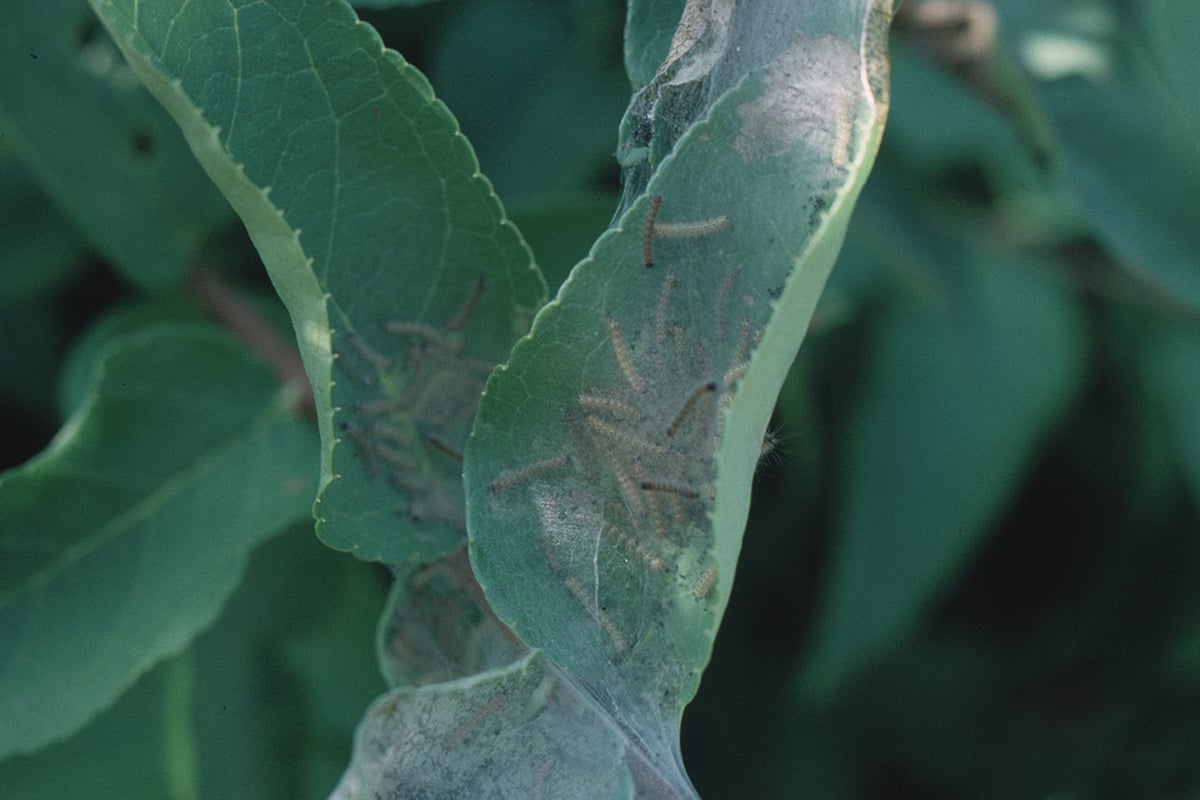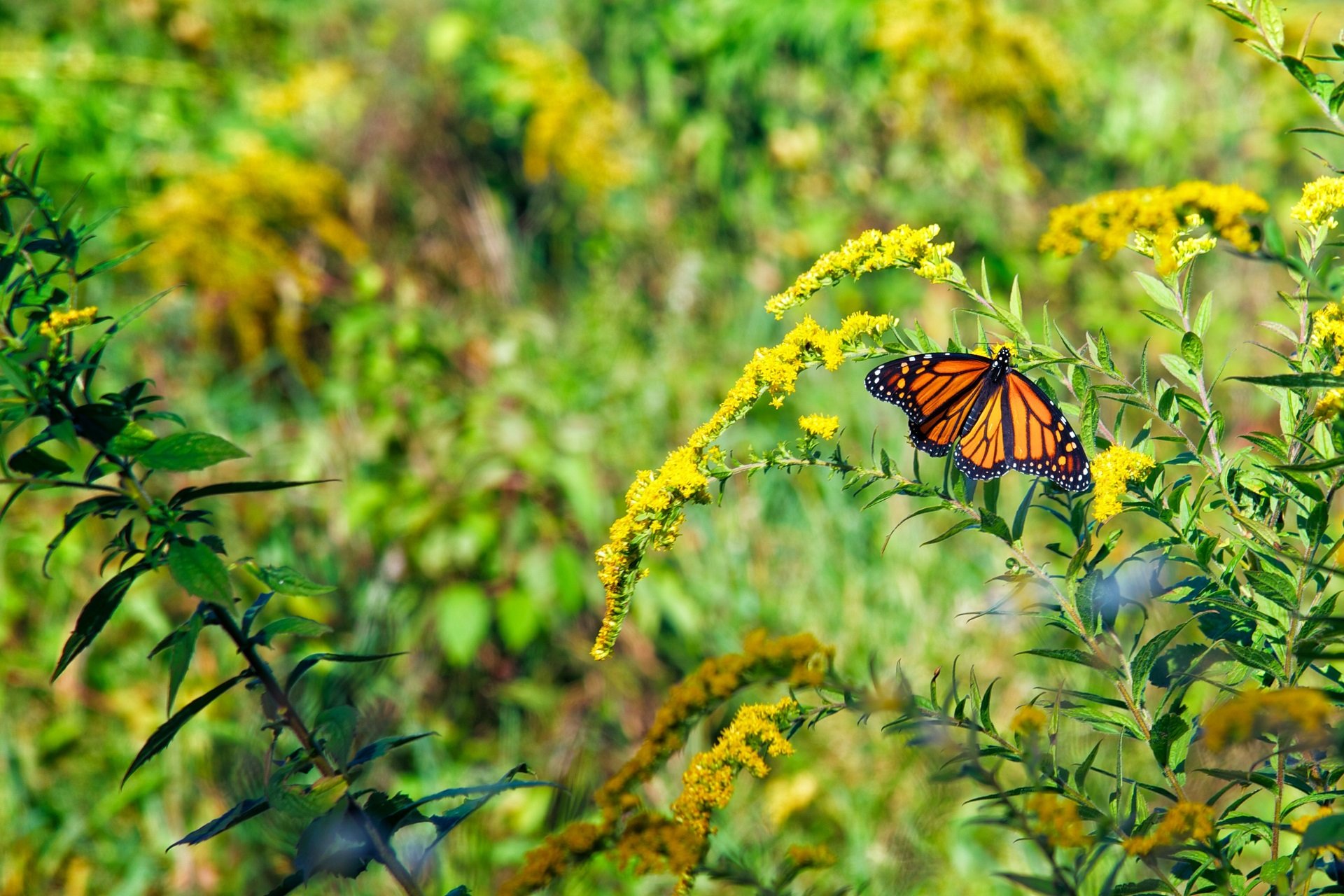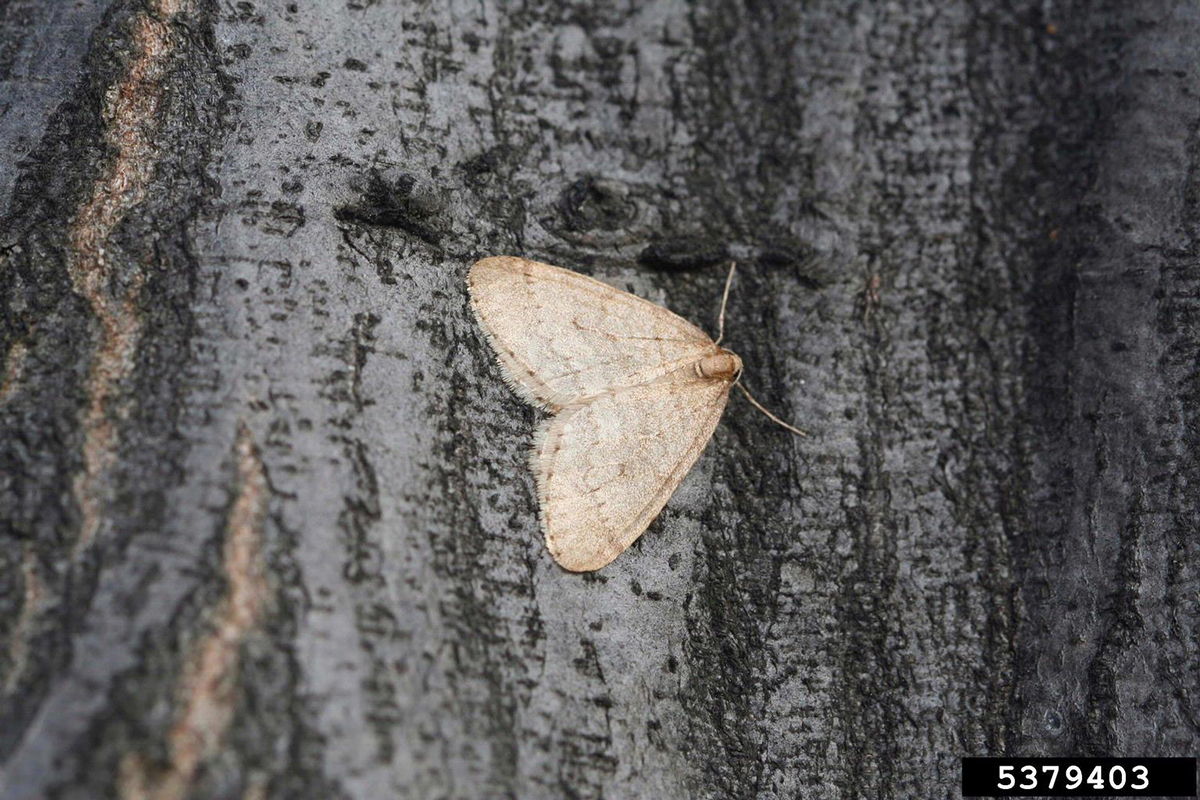Native Nuisance Moths
Webworm Caterpillars
The fall webworm (Hyphantria cunea) is the caterpillar of a native moth known for its “unsightly webs” enveloping whole branches. The webs begin to appear in late summer and remain active through early fall. They do not cause widespread defoliation and host trees typically survive infestation.
How to Identify Webworm Caterpillars
Coloration of the webworm caterpillar varies from whitish to dark gray. You can easily distinguish them from tent caterpillars and other pest moths by the coat of long white hairs covering their sides and back. The adult moths are pure white.
Fall Webworm Life Cycle
Adult webworm moths emerge in May and June and begin to lay eggs on the undersides of leaves at the tips of the branches of many species of hardwood trees. These include common roadside and garden trees such as cherries, crabapples, birches, and lilacs.
In mid-July the eggs hatch and the caterpillars begin to spin an extensive silken web. Unlike tent caterpillars however, which feed outside their web and retreat to it when not feeding, the webworm encloses whole clusters of leaves at the ends of branches and feeds on the leaves within their gathering, expanding the web downward toward the trunk and capturing more leaves as the colony expands.
When the caterpillars are fully grown, they drop to the ground where they pupate in leaf litter and remain for the winter.
The webs attract a great variety of parasitic wasps and flies, which use the caterpillars as hosts. These so-called “parasitoid” insects are key natural allies in controlling pest species populations. Webworm colonies can be viewed as performing a service by providing communal nurseries for these pollinators.
When a webworm nest is disturbed, mature caterpillars will “wag” their bodies in unison, presumably as a distraction for predators.
Webworm Covered Trees
Fall webworms can defoliate entire trees, but unless a tree has been stressed by other factors, it usually recovers, and the main negative effects of an infestation are aesthetic. Numbers and locations of webworm outbreaks differ from year-to-year based on environmental factors, so the same trees are not necessarily affected each year.
The best (simplest) remedy for a webworm outbreak is simply to remove the webs when they first appear in July, using a long stick or pole. If you wait until the caterpillars are larger and more abundant, opening the webs can provide an additional food source for nesting birds. Burning the webs will do more damage to the trees than the caterpillars will, and chemical and biological treatments also have downsides disproportionate to the problem.
How Mass Audubon Supports Webworm Caterpillars
Mass Audubon works at our wildlife sanctuaries and beyond to ensure that the nature of Massachusetts continues to thrive. By scientifically monitoring Massachusetts wildlife, Mass Audubon informs important conservation decisions and launches targeted initiatives to help at-risk species. In addition, fostering healthy habitats, advocating for supportive policies, and educating people about the importance of nature conservation is critical to our success. Learn more about our work
How You Can Support Webworm Caterpillars
Mass Audubon supports wildlife like webworm caterpillars every day, but we couldn’t do it without the support of our 160,000+ members.
Help us support webworm caterpillars, and insects like them, by becoming a member today.
Stay Connected
Don't miss a beat on all the ways you can get outdoors, celebrate nature, and get involved.






